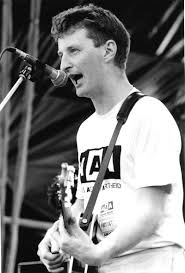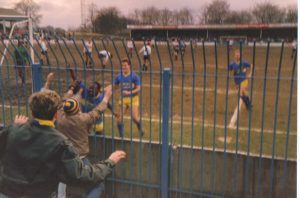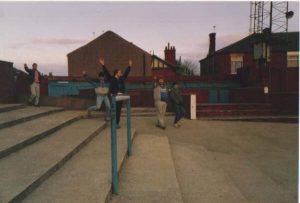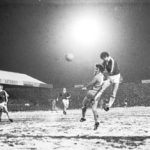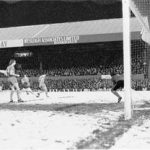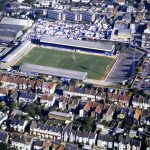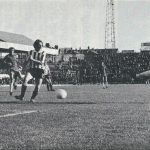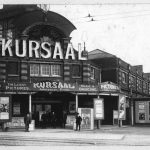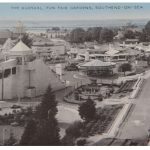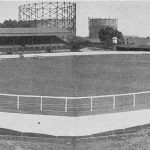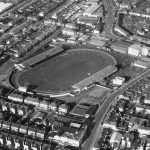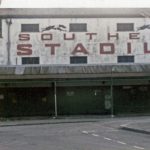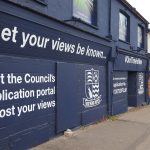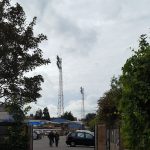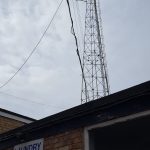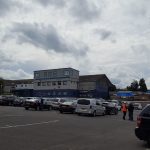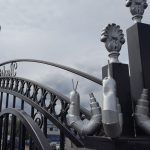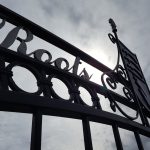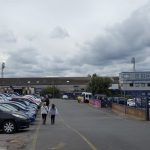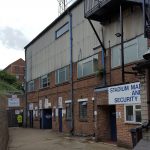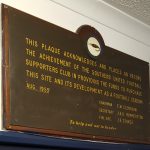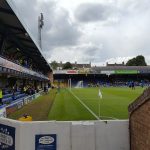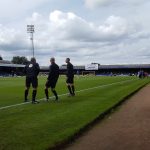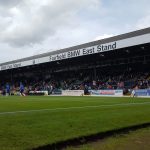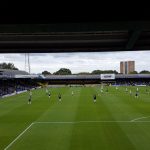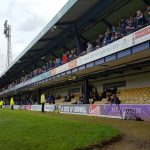Southend United 2 Peterborough United 3
League 1
Saturday 8 September 2018
The context
International break, so a chance for the three of us to notch up one of the few remaining grounds none of us had visited. Southend is one of those trips we kept postponing, on the basis that the Shrimpers not only harbour a long-running ambition to leave their current home, but also seem perpetually on the verge of doing so – and who needs to drive from Lancashire to the Essex seaside twice? However, the realisation had dawned that they’ve been talking about moving for 30 years and haven’t done it yet. So, bullets bitten and all that.
The history
Although I’d never been to Roots Hall I certainly felt as though I had, because back in the Eighties I had a friend who was a diehard Shrimper and never stopped talking about them. For three years I lived and breathed Richard Cadette, Paul Brush, Shane Westley, Roy McDonough and David Webb. Working in Manchester gave him a surprising number of opportunities to indulge his fetish, and he would regularly take himself off to local grounds to watch the Blues on their travels, usually in an accident-prone way. He mistook the kick-off time and had to kill eight hours on a bank holiday in Doncaster. He arrived at Prenton Park just as the final whistle blew. He was taken to Preston station in a police van after being rescued from Chorley fans. And, most memorably, he was one of a small band who saw his beloved team win promotion on a Friday evening at Stockport’s Edgeley Park.
We gradually lost touch over the years that followed. He came to visit me in the Midlands a few times, and we took in Southend games at places like Hereford and Walsall. And on one notable occasion I stayed at his house in County Durham and we amused ourselves getting drunk, eating bad food and watching Sunderland. This was the weekend when, idly wandering around Strawberry Place, we somehow ended up bumping into Kevin Keegan and getting a guided tour of St James’ Park. This was his world, a place where bizarre things happened and managed to appear totally logical. I wondered whether Southend would be the same.
The journey
In the words of Essex boy Billy Bragg – “rather near Basildon, Pitsea, Thundersley, Hadleigh, Leigh-On-Sea, Chalkwell, Prittlewell, Southend’s the end.” It took no more than a couple of hours to reach the city limits from our meeting place at Cannock, but the “trunk road to the sea” element occupied the best part of another one, as we crawled in traffic caused by ‘essential’ repairs on a dual carriageway with no right turns. On the plus side, our skills of floodlight-spotting are still sharp after all these years, and we parked up at a convenient school near Roots Hall a little before two.
The ground
It’s an interesting fact that, prior to the opening of Scunthorpe’s Glanford Park in 1988, Roots Hall was the last ground to be built in this country. So for 33 years following the grand opening in 1955 it was officially cutting edge. A slightly less interesting fact is that it wasn’t actually finished until 1966. At that time the main stand was completed to its present full length, while the West Bank opposite had a second barrel roof added, extending it to the touchline where previously it perched at the rear. The floodlights were also installed around then, completing an arena that packed in an almighty 31,033 for a snowy 1979 Cup-tie with Liverpool.
- almighty (Southend Echo)
- snowy (Southend Echo)
“Built” is a bit deceptive, because Southend did in fact play at Roots Hall from their formation in 1905 until after the First World War. At that stage it began to be used for “storage” (the record books are unclear on what was stored), and then as a sand quarry. By the time the club moved back it was full of rubbish (some fans would tell you nothing has changed since), so much so that it took a year just to clear the site.
Roots Hall’s crowning glory was the mountainous South Bank, its 72 steps of banking laid by Supporter’s Club volunteers in 1964. Sadly this mightiest of terraces was mostly sold off for housing in 1988, during one of the club’s not infrequent financial crises. Its site now holds a block of flats fronted by a narrow two-tier stand, from whose unfeasibly steep upper storey we enjoyed the only pillar-free view in the whole ground.
- south bank on right
- south bank behind
Southend’s other previous homes were so delightfully quirky that in 1955 Roots Hall was no doubt sniffily dismissed as a bland modern identit stadium. First, they played at the world-famous Kursaal amusement park on the seafront. Built in 1894 as a “Marine Park and Gardens”, the Kursaal included a “palace” containing a circus, ballroom, arcade, dining hall and billiard room, the biggest fairground in the South of England and a zoo housing bears, tigers and wolves.
- palace
- fairground
- stadium
In the late 1920s greyhounds were raced at the stadium before high rents drove the dog owners away: the same was also true of the Blues, who moved out in 1934 to share a purpose-built football and greyhound stadium near the town’s railway station (the site is bounded by the present-day Stadium Road and Greyhound Way). They stayed for 21 years, during which (in a case of history repeating itself) the site was requisitioned by the military and left in a poor condition. Dog racing continued at the venue until 1985.
- Southend stadium
- going to the dogs
Original 1955 structures survive on three sides of the modern Roots Hall, with the only exception being the sadly truncated south stand. The main stand, while epically shabby on the outside, still manages to contain a Tardis-like amount of facilities. The West and North Banks retain their magnificent barrel roofs, although both were seated and the corner sections clumsily covered during an unlikely sojourn in the Championship during the mid-Nineties. Run-down it may be, but half close your eyes and this is still the vision of an ideal, post-war, small-town football ground.
- ambition to leave
- Roots route
- laundry blues
- welcom to Southend
- little before two
- prawn again
- great gate
- Essex girls
- epically shabby
- volunteers
- ideal vision
- official line-up
- Tardis-like
- pillar free view
- two-tier stand
Flesh and wine
Due to arriving late our choices were a bit limited, but the social club underneath the main stand seemed a good option. “Go on in lads, this lot’ll give you no bother”, was the advice from a steward, and so it proved. Pie-wise there was – well, a pie, in a polystyrene box no less. It seemed not only the visitors were posh.
The game
This pitched a Peterborough side who were top against a Southend team who weren’t. Posh demonstrated their promotion credentials by rocking up with a thousand-odd fans, a slick all-white away kit and an air of brisk muscularity. They were 2-0 up and oozing arrogance within the hour, but then the home team – who shared possession but did most of the attacking – staged the kind of comeback usually described as “thrilling”, and in front of us too. All five goals were the product of fast-paced attacking and hapless defending, and as a neutral you can’t ask for much more than that.
Teams and goals
Southend: Stockdale, Bwomono, White, Turner, Coker, McLaughlin (McCoulsky 88), Mantom, Dieng, Bunn, Cox (Robinson 83), Hopper. Unused subs: Bishop, Klass, Moore, Henry, Batlowka.
Peterborough: Chapman, Naismith, Tafazolli, Woodyard, Daniel, Cummings (Toney 70), O’Hara, Walker (Maddison 55), Bennett, Godden, Dembele (Ward 78). Unused subs: Reed, Cooper, Yorwerth, Tyler.
Goals: Southend: Hopper 63, McLaughlin 75. Peterborough: Godden 32, 47, Toney 87.
Attendance: 6,551
